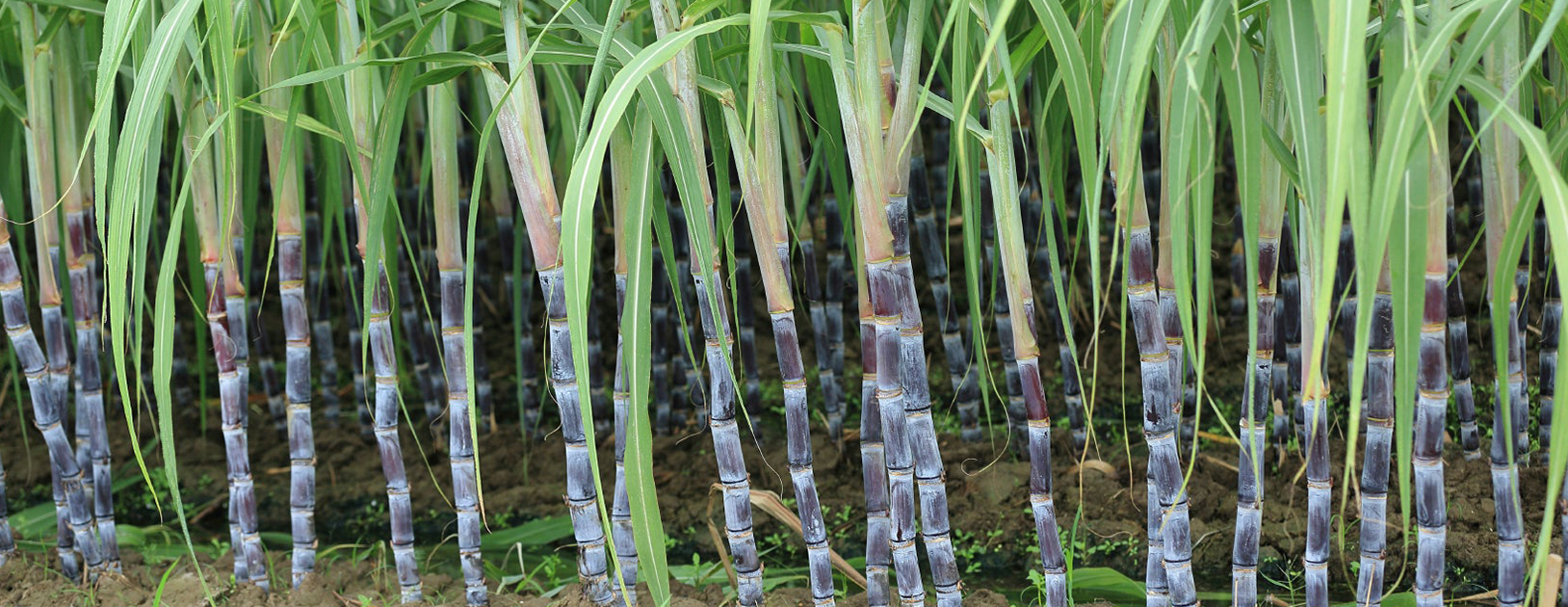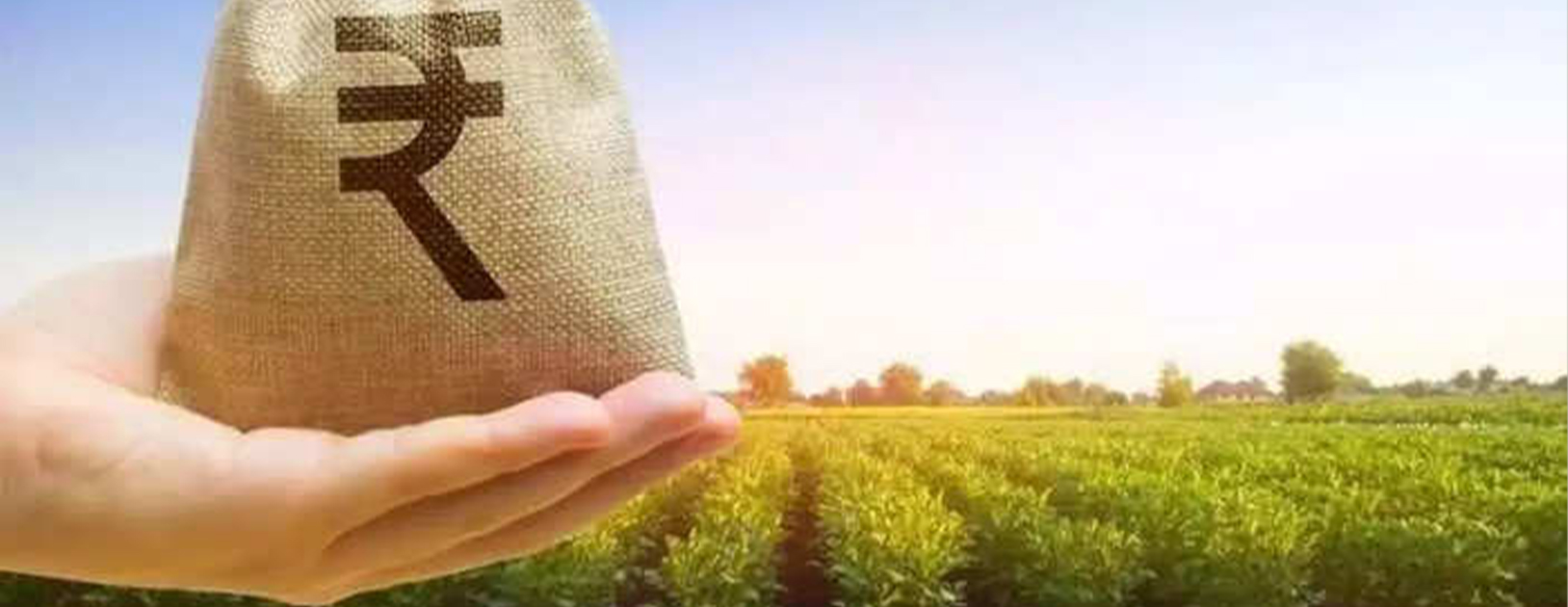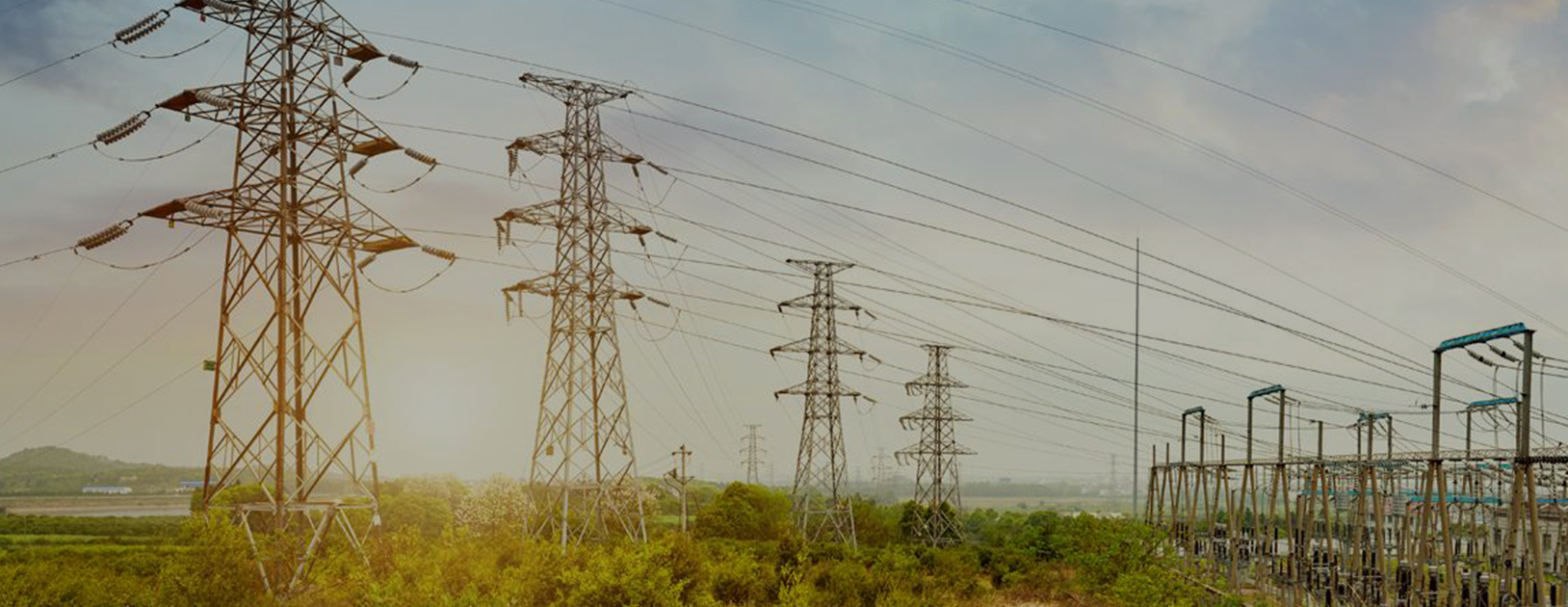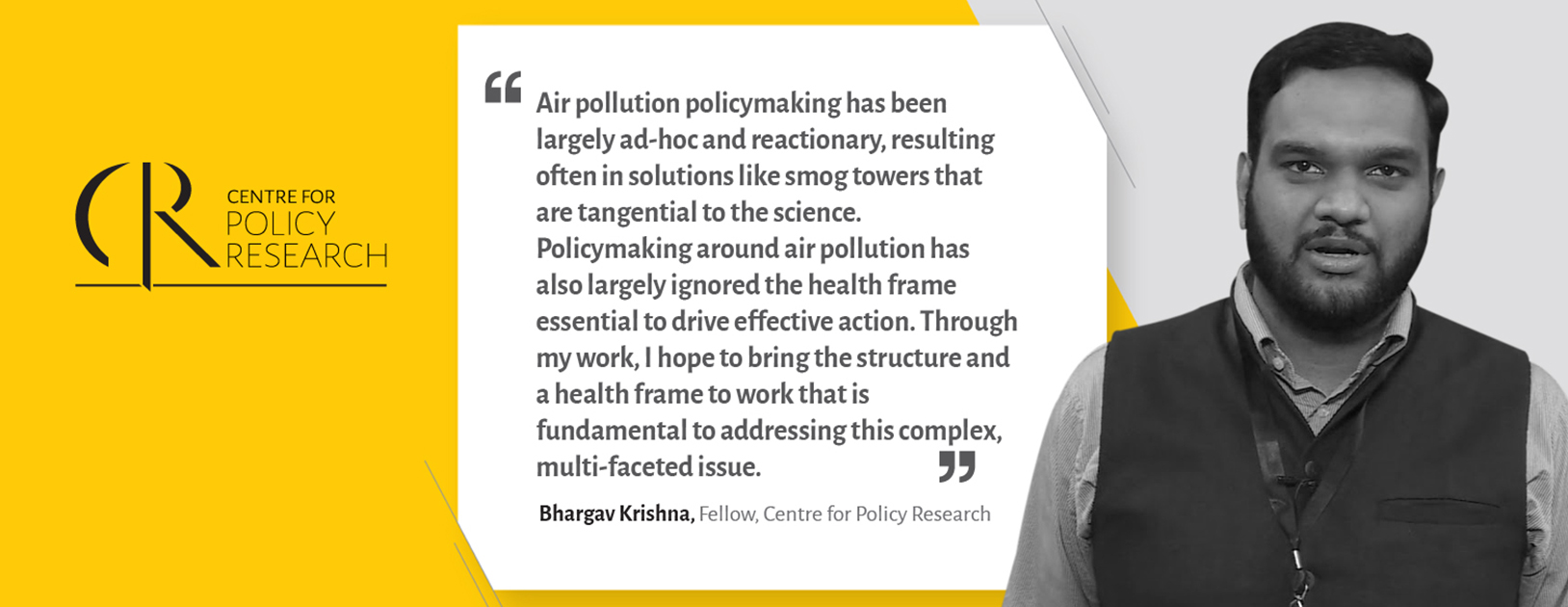All in all, then, there would be some 4.5 million families – farmers and workers – dependent on sugarcane in UP. Inclusive of their members (4-5 per family), it would add up to 20 million persons. That works out to over 8% of UP’s total estimated 240 million population – in other words, one in every 12 persons in the state!
It’s not difficult to understand why sugarcane is so ubiquitous in UP. Virtually the whole of northern UP is a Ganna Pradesh. That encompasses the districts of the state’s North-West (Saharanpur, Shamli, Muzaffarnagar, Bijnor, Baghpat, Meerut, Ghaziabad, Hapur, Amroha, Moradabad, Bulandshahr, Sambhal and Badaun), North-Central (Rampur, Bareilly, Pilibhit, Shahjahanpur, Lakhimpur Kheri, Hardoi, Sitapur and Barabanki) and North-East (Bahraich, Balrampur, Gonda, Ayodhya, Ambedkar Nagar, Basti, Gorakhpur, Maharajganj, Kushinagar and Deoria) regions. Ganna Pradesh is essentially the northern half of UP, above Mathura-Aligarh, Lucknow, Amethi-Sultanpur and Azamgarh.
What is so unique about Ganna Pradesh making it suitable for sugarcane cultivation? Sugarcane, we know, requires more water than most other crops, the primary reason being its long duration of 11-12 months. Cane in UP is grown in the Upper Doabs – the lands between its great south-flowing rivers. Thus, the North-West ganna belt covers the riverine plains between the Yamuna, Ganga and Ramganga; the North-Central Doab is between the Ramganga, Gomti and Sharda-Ghaghara; and the North-East between Sharda-Ghaghara, Rapti and Gandak extending to Bihar. The lands between these confluent rivers have extremely fertile alluvial soils, not to mention water, ideal for ganna. Unlike with Maharashtra, Karnataka or Tamil Nadu, water has not been a limiting factor in Ganna Pradesh, while also reinforced by a network of canals built from British colonial times. These include the Eastern Yamuna and Upper Ganga canals irrigating the North-West districts, the Sharda Canal in North-Central and the recently-inaugurated Saryu Canal project interlinking five rivers (Ghaghara, Saryu, Rapti, Banganga and Rohini) of North-East UP.
Ganna Pradesh’s potential, however, wasn’t really exploited till around 2004, when the then Mulayam Singh Yadav government in UP came out with a Sugar Industry Promotion Policy. Under it, a host of incentives were offered for establishing new or expanding existing mills: 10% capital subsidy on investment; exemptions from stamp duty and registration charges on land purchase, entry tax on sugar, purchase tax on sugarcane and trade tax-cum-administrative charges on molasses; and reimbursement of costs of transport of sugar up to 600-km distance, transport of cane from out-centres to factory gate and cooperative society commission on purchase of cane. The incentives were made available for a period of 5 years if companies invested a minimum of Rs 350 crore and 10 years for those investing more than Rs 500 crore.
Although most of the above sops never got delivered (https://indiankanoon.org/doc/107057029/), the policy induced large-scale investments in both greenfield and brownfield milling capacities. Till 2003-04, the total crushing capacity of UP’s mills was below 400,000 tonnes of cane per day (tcd). Today, the state has 120 mills with aggregate capacity of 787,275 tcd (see table below).
Region-wise capacity of sugar mills (tcd)
| North-West UP |
371250 |
| Saharanpur |
42750 |
| Shamli |
23500 |
| Muzaffarnagar |
61700 |
| Bijnor |
68000 |
| Baghpat |
15500 |
| Meerut |
48800 |
| Hapur* |
18500 |
| Amroha |
16900 |
| Moradabad |
25100 |
| Bulandshahr** |
17750 |
| Sambhal |
21000 |
| Badaun*** |
11750 |
| North-Central UP |
242625 |
| Rampur |
15000 |
| Bareilly |
25950 |
| Pilibhit |
25250 |
| Shahjahanpur |
25925 |
| Hardoi@ |
28750 |
| Lakhimpur Kheri |
80500 |
| Sitapur |
36250 |
| Barabanki |
5000 |
| North-East UP |
173400 |
| Bahraich |
15850 |
| Balrampur |
31000 |
| Gonda |
26200 |
| Ayodhya@@ |
18750 |
| Ambedkar Nagar |
7500 |
| Basti |
22000 |
| Gorakhpur@@@ |
11000 |
| Maharajganj |
7000 |
| Kushinagar |
28100 |
| Deoria |
6000 |
| TOTAL UP |
787275 |
*Includes one 5,000 tcd mill in Ghaziabad; **Includes one 1,250 mill in Aligarh;
***Includes one 3,500 tcd mill in Kasganj; @Includes one 1,250 tcd mill in Farrukhabad; @@Includes one 1,250 tcd mill in Sultanpur; @@@Includes one 3,500 tcd mill in Azamgarh and one 2,500 tcd mill in Mau.
Wonder variety
The second major breakthrough took place with the commercial cultivation of Co-0238, the blockbuster variety developed by Dr Bakshi Ram, former director of the Indian Council of Agricultural Research’s Sugarcane Breeding Institute at Coimbatore. Till 2012-13, this variety, officially released in 2009, was being grown only in select farmers’ fields under evaluation trials by the Indian Sugar Mills Association. In the 2013-14 sugar year (October-September), Co-0238 was cultivated on a full scale in 72,628 hectares across UP. From virtually nothing, its share in UP’s total sugarcane area rose to 3.09% in 2013-14, 8.30% in 2014-15, 19.64% in 2015-16, 35.49% in 2016-17 and 52.55% in 2017-18, and further to 69.02% in 2018-19, 82.21% in 2019-20 and 86.7% in 2020-21.
Co-0238 had two game-changing characteristics.
The first was its being an early-maturing variety. “Early-maturity” referred not to the crop’s duration per se, but to sucrose accumulation. UP farmers mostly plant sugarcane during February-April and it is ready for crushing in 11-12 months. From this harvested plant-cane, there is also a 9-11 month “ratoon” crop that sprouts automatically from its stubbles. The ratoon cane is what the mills first crush from November. Harvesting of the plant-cane happens after mid-January. The advantage with early-maturing varieties is that sucrose accumulation reaches 13-13.5% in the ratoon cane by November itself and by mid-January for the plant crop. This isn’t so with “general” varieties, where the same peak sucrose levels are obtained only after mid-December in the ratoon and from March for the plant-cane. Early-maturing varieties basically enable mills to achieve higher sugar recoveries right from November through the crushing season till April-end.
The table below shows how the average sugar recovery from cane crushed by mills in UP has gone up – from just over 9% to 11.5% over the last 10 years. This is largely courtesy of Co-0238. UP has, since 2016-17, even overtaken Maharashtra as India’s top sugar producer. Moreover, the average recovery rate recorded by its mills is today above that of Maharashtra (not all of the sucrose in cane is extracted/crystallized as sugar; the unrecovered part goes into the molasses used by distilleries).
The Big-Two: UP versus Maharashtra
| Year (Oct-Sep) |
Sugar production
(lakh tonnes) |
Sugar recovery
(% of cane) |
| UP |
Maharashtra |
UP |
Maharashtra |
| 2011-12 |
69.74 |
89.96 |
9.07 |
11.67 |
| 2012-13 |
74.85 |
79.87 |
9.18 |
11.41 |
| 2013-14 |
64.95 |
77.12 |
9.26 |
11.41 |
| 2014-15 |
71.01 |
105.14 |
9.54 |
11.30 |
| 2015-16 |
68.55 |
84.15 |
10.62 |
11.33 |
| 2016-17 |
87.73 |
42.00 |
10.61 |
11.26 |
| 2017-18 |
120.50 |
107.10 |
10.84 |
11.24 |
| 2018-19 |
118.22 |
107.21 |
11.49* |
11.26 |
| 2019-20 |
126.37 |
61.61 |
11.73* |
11.30 |
| 2020-21 |
110.59 |
106.30 |
11.46* |
10.50 |
*Sugar recovery is lower at 11.46% in 2018-19, 11.30% in 2019-20 and 10.76% after accounting for diversion to B-heavy molasses. Maharashtra’s recovery rates shown factor in such diversion.
But it’s not only mills that have benefitted from Co-0238. That links up with its second significant transformative impact. Prior to Co-0238, all cane varieties grown in northern India were “medium-thin”, with the average diameter of their sticks at 2-2.25 cm each. Co-0238 was “medium-thick”. Its individual cane sticks had a diameter of 2.5-2.75 cm. While increased thickness conferred greater yields, it could potentially also result in lower sugar recovery. The breeding challenge lay in breaking this negative correlation: The need was for a medium-thick variety giving higher yields to growers and simultaneously accumulating more sucrose for mills to recover early in the crushing season and through the winter.
That’s where Dr Bakshi Ram’s variety made all the difference. Water may not have been a limiting factor for cane in UP, but the winters were always so. Sugarcane has traditionally been viewed as a tropical crop requiring sunshine as much as water for both yields and sugar recovery. That limiting factor was circumvented through Co-0238 – proof of it being average cane yields in UP rising from below 60 tonnes to 80 tonnes-plus per hectare over the past 10 years. The extra 20 tonnes yield, thanks to Co-0238, would have considerably offset the effects of only marginal hikes in cane price – from Rs 315 to Rs 350 per quintal since 2016-17 – and steep jump in diesel, electricity, fertilizer and crop protection chemical costs. For mills, the extra 2 kg or so of sugar produced from every quintal of cane has been an unequivocal blessing. On the 110 mt of cane crushed annually by them, the additional revenue from 2.2 mt of extra sugar at Rs 30/kg average realization comes to Rs 6,600 crore!
One must mention here one other reason for cane yields going up in UP. It has to with farmers adopting trench planting – preparing raised beds on fields and sowing the cane seeds (‘setts’) on the furrows at 4-5 feet row-to-row distance. This technology – as opposed to conventional flat-bed planting at narrow 2-3 feet spacing – has led to better tillering and the canes coming out longer and thicker, besides making it easier to give water, fertilizers and crop protection chemicals through the furrows. Co-0238, in combination with the spread of trench planting and wide-row spacing, has brought about a revolution in the ganna fields of UP. Many farmers are also taking advantage of the wider space available between rows to plant short-cycle crops on the raised beds. These crops mature within four months, while the cane planted on the furrows continues to grow even after they get harvested (https://bit.ly/3mTTr3m).
Average cane yield in UP (tonnes per hectare)
| 2011-12 |
59.35 |
| 2012-13 |
61.63 |
| 2013-14 |
62.74 |
| 2014-15 |
65.15 |
| 2015-16 |
66.47 |
| 2016-17 |
72.38 |
| 2017-18 |
79.19 |
| 2018-19 |
80.50 |
| 2019-20 |
81.10 |
| 2020-21 |
81.50 |
Biofuel bonanza
A more recent boost to UP’s sugar industry has come from the Narendra Modi government’s National Policy on Biofuels unveiled in May 2018 – and, more significantly, the institution of a differential pricing regime in ethanol used for blending with petrol. Since 2018-19, mills are being paid higher rates for the ethanol that they produce from ‘B-heavy’ molasses and cane juice, than through the conventional ‘C’ molasses route.
Mills typically crush cane with 13.5-14% TFS or total fermentable sugars content (TFS includes sucrose and reducing sugars, namely glucose and fructose). From every tonne of cane, they recover around 115 kg (11.5%) sugar. The un-crystallized, non-recoverable TFS (2-2.5%) goes into ‘C’ molasses that yield about 10.67 litres of ethanol on fermentation. Alternatively, they can extract, say, 10% sugar and divert the 1.5% extra TFS into an earlier ‘B-heavy’ stage molasses yielding some 19.42 litres of ethanol. A third option is to not make any sugar and ferment the entire 13.5-14% TFS to produce roughly 76 litres of ethanol.
By fixing higher prices for ethanol derived from fermentation of whole sugarcane juice/syrup and the intermediate ‘B-heavy’ stage molasses than from ‘C’ molasses (see table below), mills have an added incentive now to put up new distillery capacities. Producing more ethanol from the first two routes has also reduced their dependence on revenues from sugar. In 2019-20 and 2020-21, mills grossed Rs 7,823 crore and Rs 13,598 crore, respectively, from ethanol sales to oil marketing companies (OMCs). Further, it enabled them to divert an estimated 0.8 mt and 2 mt equivalent of sugar in these two years.
Ex-mill price of ethanol in Rs per litre
|
2016-17 |
2017-18 |
2018-19 |
2019-20 |
2020-21 |
2021-22 |
| ‘C’ molasses |
39.00 |
40.85 |
43.46 |
43.75 |
45.69 |
46.66 |
| ‘B’ heavy |
– |
– |
52.43 |
54.27 |
57.61 |
59.08 |
| Cane juice/syrup |
– |
– |
59.19 |
59.48 |
62.65 |
63.45 |
Note: Ethanol supply year is from December to November.
The adoption of differential pricing has led to the supply of ethanol by mills to OMCs increasing, from a mere 38 crore litres in 2013-14 and 66.5 crore litres in 2016-17 to 255 crore litres in 2020-21. Much of this has come from ‘B’ heavy molasses, with the share of direct cane juice/syrup, too, set to surpass that of ‘C’ molasses in 2021-12 (see table below). In the current year, ethanol supply by mills is expected to cross 350 crore litres, while diverting up to 3.5 mt of sugar towards ethanol produced from ‘B-heavy’ molasses and cane juice. The ethanol-blending target of 10% also looks achievable in 2021-22, as against the all-India average of 8.1% in 2020-21, 5% in 2018-19, 2.07% in 2016-17 and 1.53% in 2013-14. The Modi government is aiming at diversion of 6 mt sugar annually by 2025, as part of its ambitious 20% blending plan. That should further bring down the industry’s reliance on sugar sales and improve the capacity of mills to make timely payments to cane growers.
Supply of ethanol under blending programme (in crore litres)
| Feedstock |
2016-17 |
2017-18 |
2018-19 |
2019-20 |
2020-21 |
2021-22** |
| ‘C’molasses |
66.5 |
150.5 |
145.8 |
74.12 |
38 |
12 |
| ‘B’ heavy |
0 |
0 |
32.6 |
68.14 |
179 |
224 |
| Cane juice/syrup |
0 |
0 |
0.7 |
14.83 |
38 |
68 |
| Damaged grain* |
0 |
0 |
9.5 |
16.08 |
38 |
41 |
| FCI surplus rice |
0 |
0 |
0 |
0 |
2 |
21 |
| Total |
66.5 |
150.5 |
188.6 |
173.17 |
295 |
366 |
*Broken/damaged rice and maize; **Contracted so far.
The National Policy on Biofuels has stimulated huge investments in ethanol production capacities by UP’s sugar mills, reminiscent of the boom in the early 2000s. That one, we saw, involved the creation of milling (as against distillery) capacities following the then state government’s Sugar Industry Promotion Policy. Between 2016-17 and 2020-21, ethanol production in UP has more than doubled from 42.70 crore litres to 99.31 crore litres. The total number of ethanol distilleries and their annual installed capacity, too, has gone up from 38 and 87.05 crore litres to 55 and 166.17 crore litres, respectively. UP has become India’s leading ethanol producer, while also achieving the highest blending-in-petrol ratio among all states. That, at close to 10% (see table below), is already the level targeted for all-India in 2021-22!
Ethanol blending % achieved*
| Uttar Pradesh |
9.79 |
| Delhi |
9.51 |
| Himachal Pradesh |
9.39 |
| Uttarakhand |
9.38 |
| Gujarat |
9.37 |
| Punjab |
9.26 |
| Haryana |
9.08 |
| Goa |
8.92 |
| Karnataka |
8.81 |
| Maharashtra |
8.80 |
| Madhya Pradesh |
8.65 |
| Chhattisgarh |
8.60 |
| Bihar |
8.23 |
| Telangana |
8.03 |
| Andhra Pradesh |
7.36 |
| Rajasthan |
6.68 |
| Tamil Nadu |
6.22 |
| Jharkhand |
5.86 |
| Odisha |
4.13 |
| Kerala |
4.01 |
| Jammu & Kashmir |
3.89 |
| West Bengal |
2.23 |
| Assam |
0.27 |
| All-India |
7.52 |
*For 2020-21 (Dec-Nov) till 14.11.2021.
Many leading sugar industry groups of UP have undertaken major investments in ethanol distillery capacities in the last 2-3 years and proposed further expansions within the next one year.
Balrampur Chini Mills, in January 2020, commissioned a 160 kilo-litres per day (KLPD) distillery at Gularia (Lakhimpur Kheri), taking its total capacity to 520 KLPD. Subsequently, it announced the expansion of both its Balrampur and Gularia distilleries (by 170 KLPD and 40 KLPD, respectively), plus a greenfield 320 KLPD distillery at Maizapur (Gonda) to produce ethanol directly from cane juice/syrup during the crushing season (November-April) and from grains (broken/damaged rice and maize) in the off-season. All these projects, more than doubling its capacity to 1,050 KLPD, are slated for completion by November 2022. DCM Shriram Ltd, likewise, commissioned a 200 KLPD distillery at Ajbapur (Lakhimpur) in December 2019, adding to its existing 150 KLPD facility at Hariawan (Hardoi). Next on the anvil is a 120 KLPD distillery at Ajbapur that can use grain as feedstock, taking the unit’s total capacity to 320 KLPD. Triveni Engineering & Industries, too, doubled its ethanol capacity to 320 KLPD through a new 160-KLPD distillery at Sabitgarh (Bulandshahr) in April 2019. Two more – a 160 KLPD molasses/cane juice distillery at Milak Narayanpur (Rampur) and another 40 KLPD grain-based at Muzaffarnagar – are to be operational before the 2022-23 sugar season.
With the Ministry of Road Transport and Highways notifying the mass emission standards for 12% and 15% ethanol-blended petrol in October 2021 (https://bit.ly/3eS9cn1), the stage has already been set for the manufacture of E12 and E15 compliant motor vehicles. The UP government can, perhaps, take the lead in enforcing 12% and 15% blending for new vehicles within the state. This makes sense, especially when Ganna Pradesh is well poised to be India’s ethanol hub with all its cane, sugar mills and distilleries. 12%, 15% and 20% blending (all vehicles produced after April 2023 are supposed to be E20 compliant) is worth pursuing first in UP, Maharashtra and Karnataka rather than in the states that cultivate little or no cane!
The road ahead
Sugarcane requires more water than most crops (see table below). This is mainly because it is grown over 11-12 months, compared to 4-5 months for paddy or wheat. Also, the worst sugarcane grower will harvest at least 40 tonnes per hectare – UP’s average is two times that – whereas the best wheat and paddy farmers’ yields are 7-9 tonnes/hectare. Sugarcane consumes less water per day and even less for every unit weight of biomass produced. That has to do with it exhibiting ‘C4’ photosynthesis, a more efficient mechanism of deploying solar energy to convert atmospheric carbon dioxide and water into plant matter than the common ‘C3’ photosynthetic pathway (https://bit.ly/3qOX1gr). Sugarcane is one of the world’s few ‘C4’ crops – along with maize, sorghum and tropical grasses.
Water requirement for different crops (millimeters over growing period)
| Sugarcane |
1500-2500 |
| Paddy/Rice |
900-2500 |
| Wheat |
450-650 |
| Sorghum (Jowar) |
450-650 |
| Maize |
500-800 |
| Ragi |
400-450 |
| Cotton |
700-1300 |
| Soyabean |
450-700 |
| Groundnut |
500-700 |
| Potato |
500-700 |
| Onion |
350-550 |
| Tomato |
600-800 |
| Banana |
1200-2200 |
| Grapes |
500-1200 |
Source: http://agropedia.iitk.ac.in/content/water-requirement-different-crops.
Mother Nature has, in a sense, already made sugarcane highly efficient at carbon sequestration and a prolific biomass producer. Its green top leaves supply much of the fodder needs of UP farmers’ cattle and buffaloes during the winter and spring months. This is before straw and stover becomes available from wheat in April-June and jowar/bajra in July-October.
It is necessary to also note that cane contains around 70% water and 30% solids, the latter comprising 14-15% each of sugars and fibre. The high water and fibre content in cane allows for sugar to be a unique industry generating its own steam and power requirement. This, again, is on account of biomass, which is nothing but stored energy from photosynthesis that gets released as heat on burning. The high-pressure boilers used in modern sugar mills can generate around 130 kilowatt-hours of electricity from every tonne of cane (i.e. 300 kg bagasse or 660 kg steam). After deducting 25 units of in-process consumption by the mill and another 11-12 units of auxiliary consumption in the boilers/turbo-generators, about 95 units is exportable to the grid. Not for nothing that Balrampur Chini alone has a total installed cogeneration capacity of 278.47 megawatts (MW) at its 10 sugar mills in UP that can together crush 76,500 tonnes cane per day. Out of the 278.47 MW, as much as 168.70 MW represents saleable cogeneration capacity. DCM Shriram’s four mills of 38,000 tcd, similarly, have a combined cogeneration capacity of 141 MW, of which 84 MW is exportable.
As regards water, we have already noted that it accounts for 70% of sugarcane by weight. Out of that 70%, 15% goes into bagasse (the fibrous residue burnt as fuel in the boilers), 5% each into molasses and press mud, and 25% used during crushing/juice extraction and lost due to evaporation. That still leaves 20% surplus water from the cooling towers/spray pounds, which can be treated for use in irrigation. Sugarcane is, thus, a source of both surplus energy and water even after processing in mills.
The challenge next is how to make sugarcane part of a circular economy, wherein it gives back to nature what it takes, to the maximum extent possible. For farmers, ganna is both a cash and fodder crop, the cane being sold to mills and the tops fed to their animals. Ganna’s potential as an energy crop – producing sugar, ethanol and power – is also being harnessed by UP’s mills.
But it doesn’t stop there.
The press mud from mills – the residue cake after clarification and filtration of sugarcane juice – is used as a fertilizer, being rich in organic matter and also containing some nitrogen, phosphorus, potassium, calcium and magnesium (https://bit.ly/3HyND7o). Mills supply the raw press mud (about 3 tonnes is produced from every 100 tonnes of cane crushed) to farmers, who apply it in the soil after composting. A more recent initiative has been to use press mud as a feedstock for production of biogas using anaerobic digesters. The raw biogas is, then, upgraded to more than 95% methane content (after removing carbon dioxide, hydrogen sulphide and other impurities) and compressed for filling in storage cylinders (cascades). This final product – BioCNG – can be utilized as green fuel, whether for automotive, domestic or commercial application. The residue sludge coming out from the digester after extraction of biogas is a source of liquid fertilizer and organic manure (https://bit.ly/3JE8xUi and https://bit.ly/32TyvTh). In August 2021, a 9 tonnes-per-day compressed biogas plant of Indian Potash Ltd at Rohana Kalan in UP’s Muzaffarnagar district was dedicated to the nation by Prime Minister Modi. The gas produced by this plant is being marketed by three retail fuel outlets of the Indian Oil Corporation in Muzaffarnagar (https://bit.ly/3qWDkDv).
Another useful byproduct and potential fertilizer source is the spent wash from distilleries. This liquid effluent generated during alcohol production can pose serious environmental problems, if discharged into land and water bodies without proper treatment. There is, however, technology now to simply concentrate the spent wash to 58-60% solids and feed it along with bagasse (as supporting fuel in 70:30 ratio) into an incineration boiler. The resultant ash coming out from the boiler in dry form has been found to contain up to 28% potash and 16.5-21% when converted into granules. For a country fully dependent on potash imports, this alternative production route can supply over a tenth of its consumption of the nutrient (https://www.aidaindia.org/Presentations2019/Delhi/Dr.%20Arvind%20Krishna.pdf). The Centre has even notified Potash Derived from Molasses (containing 14.5% of the nutrient) as a fertilizer and included it under the nutrient-based subsidy scheme.
UP’s sugar industry is today at an inflexion point where it can harness the full potential of ganna that engages almost a tenth of the state’s people. Co-0238 is evidence of what varietal breeding can do for cane yields and sugar recoveries. There is tremendous scope to also grow the crop in an environmentally-sustainable way using less water and giving back to Mother Nature what is taken from it. Mills in UP have gone beyond sugar to producing ethanol, cogeneration power and organic fertilizers. With forward-looking government policy, whether on biofuels or transparent formula-based pricing of cane (linking it to realizations from sugar and by-products), Ganna Pradesh can do much better than Brazil!
This note, part of the Understanding the Rural Economy series by CPR, has been authored by Harish Damodaran
Find all previous notes as part of the series here:
Find all previous notes as part of the series here:
 Sushant Singh is a Senior Fellow at CPR. His research interests include international relations, foreign policy, defence and geopolitics. In this interview as part of the Leading Policy Conversations series, he discusses the national security challenges India confronts in 2022.
Sushant Singh is a Senior Fellow at CPR. His research interests include international relations, foreign policy, defence and geopolitics. In this interview as part of the Leading Policy Conversations series, he discusses the national security challenges India confronts in 2022.
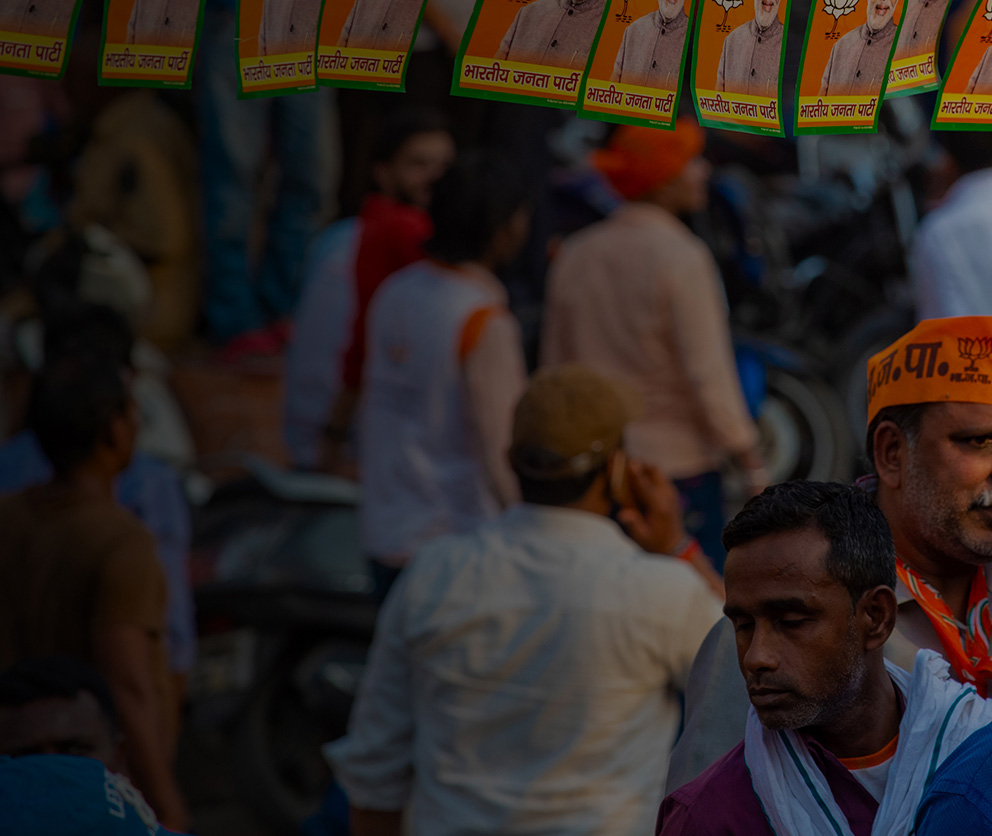
 Rahul Verma is a Fellow at CPR. His research interests include voting behavior, party politics, political violence, and media. In this interview as part of the Leading Policy Conversations series, he discusses the political challenges India confronts in 2022.
Rahul Verma is a Fellow at CPR. His research interests include voting behavior, party politics, political violence, and media. In this interview as part of the Leading Policy Conversations series, he discusses the political challenges India confronts in 2022.

